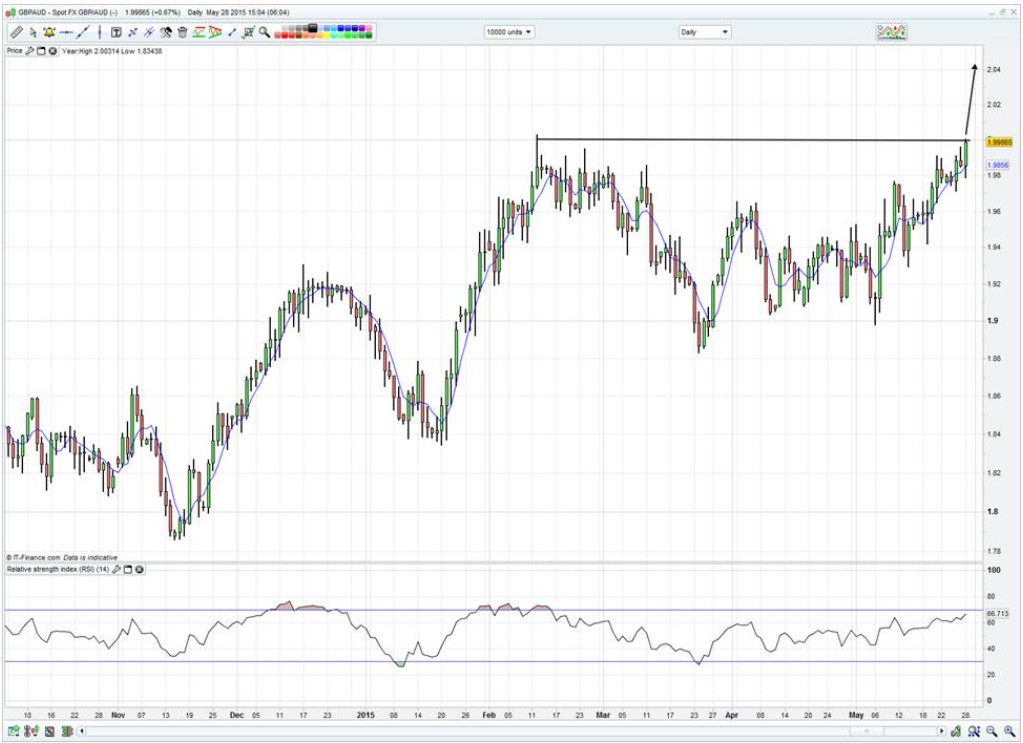Chris Weston, Chief Market Strategist at IG Markets
Asia equity markets really are beating to their own individual drum at present, with such interesting and compelling market and economic thematics unique to the geography.
Equity markets in China, Japan, Australia and Korea are exerting such limited correlations it is, in theory, making investors’ geographical preference just that little bit more easier. Traders are thinking and acting around ‘momentum’ and buying into strength and this seems absolutely right to me. From this perspective then, Japan and China are the clear winners. However, as we have seen from the fund flow data this year, the markets seem far more inclined to buy Japan. Of course, this is also a function of risk tolerance, but when you are seeing clear portfolio rebalancing from the Japanese pension funds into domestic and foreign equities and out of domestic bonds, the trading and investment community is simply hitching a ride and aligning their directional views.
You can also throw in one that the Nikkei is trending in such a glorious manner, an economy which is showing signs of improvement (as seen in today’s retail trade data) and importantly consensus earnings estimate which have been revised 13% higher this year. How many markets around the world have actually seen earnings estimates being revised higher this year? Not many. When you mix in 10 straight quarters of earnings beats, huge cash balances on company balance sheets (even dwarfing US corporates) and an ever-increasing level of returning cash to shareholders, you can see why the Nikkei is up 14 of the last 15 sessions!
The weekly Ministry of Finance fund flow data showed ¥265.1 billion flowing into foreign stocks from Japan funds, while foreigners ploughed ¥561.2 billion into domestic stocks – this to me tells a fairly clear story. On the FX front, it’s always interesting to look at EUR/JPY as both currencies are influenced by the most aggressive underlying central banks in the G10 currency region. Interestingly, even though the European Central Bank is front loading its bond purchases, EUR/JPY looks set to break above strong supply and a move through ¥136.71 would open up ¥140.00. GBP/JPY is the pair that really should be on every momentum and trend follower’s radar and has broken out to the highest level since October 2008. Let’s see if the pair can have a daily close above the ¥190 level as this would be outright bullish.
USD/JPY is at levels not seen since 2002, hitting a high of ¥124.30. The next logical upside target would be ¥125.90 (the June 2002 high). Hedge funds and other leveraged funds are once again buying the pair in good size and while the pair is overbought, pullbacks are clear buying opportunities in my opinion. US data in the form of April pending home sales and jobless claims will be a catalyst later today, as will rhetoric from the Fed’s uber dove Kocherlakota’s – Expect talk around low inflation and a view that the economy can’t handle rate hikes until late 2016, so a short-term risk to USD longs.
GBP/AUD for parts of today had a two handle in front of it (hitting a high of AUD2.009). This is a function of the pound seemingly being the currency du jour (even cable is lower), but the fact the AUD has been hit on Aussie growth concerns is also in play. Today’s Australian Q1 capital expenditure numbers are clearly a concern and will pose a real headache for the Reserve Bank. The first estimate for 2015/16 spending intensions was revised by A$7.2 billion, but it was the substantial miss to the second estimate, including a 10% decline in intensions for the non-mining space, that suggests the door is now open for the RBA to act again this year. Spending intensions in the mining space collapsed by 28%.
(Daily chart of GBP/AUD)

The Aussie bond market has said it all, with the curve flattening as short term rates fell faster than long end rates. The spread between two-year Aussie and US bonds has narrowed from 1.35% to 1.28% and is eyeing the March low of 1.13%. As you would expect the AUD has gone along for the ride falling against all currencies in the G10 currency region. AUD/USD has traded to a low of $0.7670 and as detailed yesterday looks destined to test the April lows. This despite the elevated nature of the iron ore price. Still, AUD has lost its correlation again its key export. Rallies in AUD/USD should be sold in my opinion.
The ASX 200 has not really shown too much concern for the poor CAPEX data and seems to be holding the 5700 level for now. Despite the broader market showing modest declines the majority of sectors have fallen on the day, although breath is positive and more stocks are actually up on the day. It feel that despite the markets pricing in a 19 basis points of cuts over the coming 12 months and the AUD falling across the curve it is now going to take more than this to get ASX market firing.